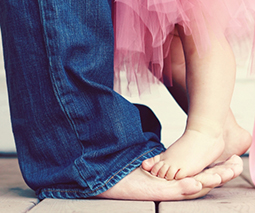How exercise can improve your sex life after babies

When you’re a mum, exercise is often linked to ‘shedding the baby weight’ or trying to achieve one of those wash-board tummies we so often see on social media, but you might be surprised to know that exercise can help with your sex life too.
Regardless of what sex was like for you before pregnancy, sex after having a baby can be a whole different world. Many of us can feel self-conscious about how we look, especially if the birth was difficult or involved tearing and stitches. Going through pregnancy and birth might leave you wondering if sex will ever feel the same again. Or, you might be so exhausted by the end of the day that sex is the last thing on your mind.
Birth can change how you feel about sex
Feeling this way after having babies is all completely normal, says Emily Smith, personal trainer and founder of the TUF Mums Mindset, who wants us to remember that giving birth can change how we feel about sex and that’s okay. “It can take some time for sex to feel comfortable again,” she says. “Whatever type of birth you’ve had, it involves a physical trauma, which can make it scary at first.”
Of course it’s not just physical trauma that can hold us back from sex after birth. Lack of energy, poor body image and decreased enjoyment of intercourse can all impact negatively on our sex life and relationship.
A little exercise can be a game-changer
But – and here’s where it gets a bit exciting – adding some regular and strategic exercises to your daily life can help improve all these areas for you, which means sex can become something you enjoy more often. Even better still: you don’t need to join a gym or spend hours a week working out for things to start improving.
According to Emily, there are several things that can get in the way of sex for women after pregnancy and birth.
1. Body image and confidence
After the massive physical transformation of pregnancy and birth, it’s normal to feel differently about how your body looks, and this can directly affect your sex life. But when it comes to loving the way you look, tweaking your mindset is just as important as getting the exercise in, and engaging in positive affirmations and regular exercise at the same time can be a powerful combination. “If you’re not confident and happy with how you look – whether that’s the shape of your tummy or what your vagina looks like after birth, this can impact how you perceive your body and whether you want your partner to see your body,” agrees Emily. “Using an affirmation like ‘I move my body because I love my body’ while you exercise will slowly rewire your brain and help your body confidence grow.”
2. Energy levels
It can be hard to muster up the energy for sex after a long day with the kids, but it’s actually possible to gain energy by incorporating the right sort of exercise into your daily routine. And rather than head to the gym for a monster workout, Emily’s advice is to instead aim for short spurts of activity that can be done without leaving the house. “An hour long spin class will leave you shattered, but doing something small every day or engaging in small bursts of interval training can be great for energy levels, as well as give you an incredible workout.” And because exercise releases endorphins that make you feel happy and energised, you’re more likely to be in the mood for sex as a result. “If you’re doing exercise you’re more likely to feel good about your body, which will increase your feelings of wanting to share your experience with your partner,” says Emily.
3. Pelvic floor strength
It’s no secret that pregnancy and birth can wreak havoc on your pelvic floor, and here’s another good reason to keep working on your pelvic floor exercises: more satisfaction during sex. “Studies have shown there’s a link between pelvic floor strength and increased sensations during sex, which will make it more enjoyable for both of you,” says Emily. If sex doesn’t feel like it used to, it could be worth stepping it up a notch with your pelvic floor exercises. Not sure if you’re doing them right? Check in with a personal trainer or physio who can give you some guidance to make sure you’re targeting the right area.









